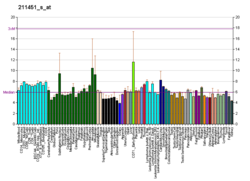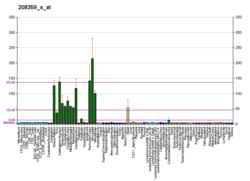| KCNJ4 | |||||||||||||||||||||||||||||||||||||||||||||||||||
|---|---|---|---|---|---|---|---|---|---|---|---|---|---|---|---|---|---|---|---|---|---|---|---|---|---|---|---|---|---|---|---|---|---|---|---|---|---|---|---|---|---|---|---|---|---|---|---|---|---|---|---|
| |||||||||||||||||||||||||||||||||||||||||||||||||||
| Identifiers | |||||||||||||||||||||||||||||||||||||||||||||||||||
| Aliases | KCNJ4 , HIR, HIRK2, HRK1, IRK-3, IRK3, Kir2.3, potassium voltage-gated channel subfamily J member 4, potassium inwardly rectifying channel subfamily J member 4 | ||||||||||||||||||||||||||||||||||||||||||||||||||
| External IDs | OMIM: 600504; MGI: 104743; HomoloGene: 3653; GeneCards: KCNJ4; OMA:KCNJ4 - orthologs | ||||||||||||||||||||||||||||||||||||||||||||||||||
| |||||||||||||||||||||||||||||||||||||||||||||||||||
| |||||||||||||||||||||||||||||||||||||||||||||||||||
| |||||||||||||||||||||||||||||||||||||||||||||||||||
| |||||||||||||||||||||||||||||||||||||||||||||||||||
| |||||||||||||||||||||||||||||||||||||||||||||||||||
| Wikidata | |||||||||||||||||||||||||||||||||||||||||||||||||||
| |||||||||||||||||||||||||||||||||||||||||||||||||||
Inward rectifier potassium channel 4, also known as Kir2.3, is a protein encoded in the human by the KCNJ4 gene. [5]





